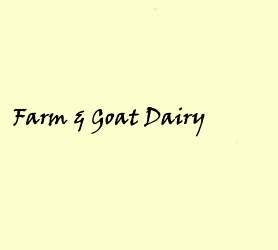20 Facts All About Goats, Test your knowledge!
Test your knowledge or learn new things you didn't know before!
- 1. Male and Female Goats are called "Bucks" and "Does", just like deer! In fact, their closest relative is deer! "Nanny" & "Billy" are not proper terms but are sometimes used as slang. Buck and Doe are the proper terms. :) A neutered male is called a "wether".
- 2. Both males and females can grow horns, unless they are naturally hornless (a trait called polled). The male's horns grow larger and more impressive than the female horns. Many people "disbud" babies so they will never grow horns.
- 3. Both males and females can grow beards! Females only ever grow what we know as a "goatie" type beard. Males grow very full, impressive beards, almost like a lion's mane, except it doesn't go around their whole head!
- 4. Goats have rectangular pupils! This gives them better peripheral vision! Since they are a prey animal, this helps them survive by seeing what is coming. Its very hard to sneak up on a goat because of their excellent field of view!
- 5. Goats are herd animals, they need at least one companion of their own kind to be happy! An only goat is a lonely goat!!! Bucks need to be housed and fenced separately from the does, so both need other goat companions for happiness. Wethers are good companions for both bucks and does.
- 6. Goat gestation is 5 months. Its a long wait for those cute little babies! Goat babies are called kids and they are born in a "litter" (unless they are a single).
- nbsp;
- 7. Goats often have more than one kid. Most common is 2 or 3 in a litter with quads not being unusual. They can have more and I know of several sets of 7!!! The most ever here at A Better Way farm is 5 in a litter!
- 8. Like all mammals, female goats start producing milk when they have their first babies. They will keep producing milk as long as there is demand (kids nursing and/or humans milking them). They will normally start producing less and less milk after 6-8 months. Most people will breed their goats to have babies once a year, to refresh their milk supply since supply starts to wane later in lactation.
- 9. When a goat has babies, it is called "kidding" (ex: "My doe Lucy is due to kid January 14th.", "We start our kidding season in January!") It is also called a "freshening". A "first freshener" is a first time mom, a "second freshener" is a doe that has kidded twice, so on and so forth. :)
- 10. A female goat produces and stores milk in her "udder" (singular, not plural, unless you are talking about multiple goats' udders!). Her nipples are called "teats". Goats have two teats while cows have 4!
- 11. There are many different breeds of goats, some are dairy specific breeds, some are meat specific breeds and some breeds are what is called dual-purpose
- 12. Nigerian Dwarf goats are the only dwarf dairy breed! Pygmies and fainting goats, which are also small, are meat goat breeds.
- 13. The amount of milk a dairy goat can produce is dependent on their breed, age, genetics and diet. Saanens are the largest North American dairy breed and can produce over 2 gallons of milk a day! A well bred, mature Nigerian Dwarf goat can produce upwards to and even over a half gallon per day!
- 14. Different breeds have different breed standards. For example, Saanens HAVE to be all white or cream. If they have more than 1/2" of color on them, they can't be registered as Saanens! Alternately, Nigerian Dwarves can be any color, any pattern, but they have a strict height limitation. All breeds have standards set. Read more about the different breed standards here: http://adga.org/breed-standards/
- 15. Goats are herbivores. They love eating brush, tree leaves, bushes and grasses/weeds too.
- 16.It is a myth that goats eat anything, and they definitely don't eat tin cans! They can actually be quite picky eaters!
- 17. Goats are ruminants. A ruminant is a mammal with hooves and multiple stomach compartments whose digestion works by chewing partly digested food a second time in order to soften it. They regurgitate their food from one compartment and chew it (this is known as chewing their cud), and then swallow it again. Cows, sheep, deer, goats... are all examples of rumants!
- 18. This is one breed of goat, called Lamanchas, that don't have visible ears! They actually DO have ears, they are just so tiny that they are completely covered by their hair so they appear earless!
- 19. Goats were the first animals to be domesticated, followed closely by sheep. Later, people began domesticating larger animals, such as oxen or horses, for plowing and transportation.
- 20. If raised with lots of human interaction, goats can be very personable and enjoy lots of attention from their humans! Much like dogs, except with no killer instinct! :)
Would you like to read more about Goats and Goat Care? Check out the Articles/Posts Index.
 |
I live on the side of a mountain with 65
goats and 4 dogs. I make 100% of my living from my homestead. My
purpose is to "Inspire,
Encourage & Empower". Read more about my story here.... |
Top Posts
- Goat Basics
- -Goats: Basic Terms & Facts
- -Goat Housing needs
- -Goat Fencing requirements
- -Goat Care Requirements
- -What Do Goats Eat?
- -Why Registered Goats?
- New Breeder Resources
- -ADGA Genetics Tool
- -Tips For Goat Setup Pics!
- -How To Lookup Milk Records
- Videos
- -Virtual Barn Tour
- -Kidding area & Nursery Tour
- -Goat Milk Parlor Tour
- -Low Cost CIP System Hack
- -Kidding - A Huge Single
- -Kidding - Head Only-no feet
- -Saving A Cold Newborn
- -Bottle Holder Rack Designs
- -Low Cost CIP System Hack
- Other Helpful Articles
- -Kidding Season Prep
- -Our Experience with ORF




